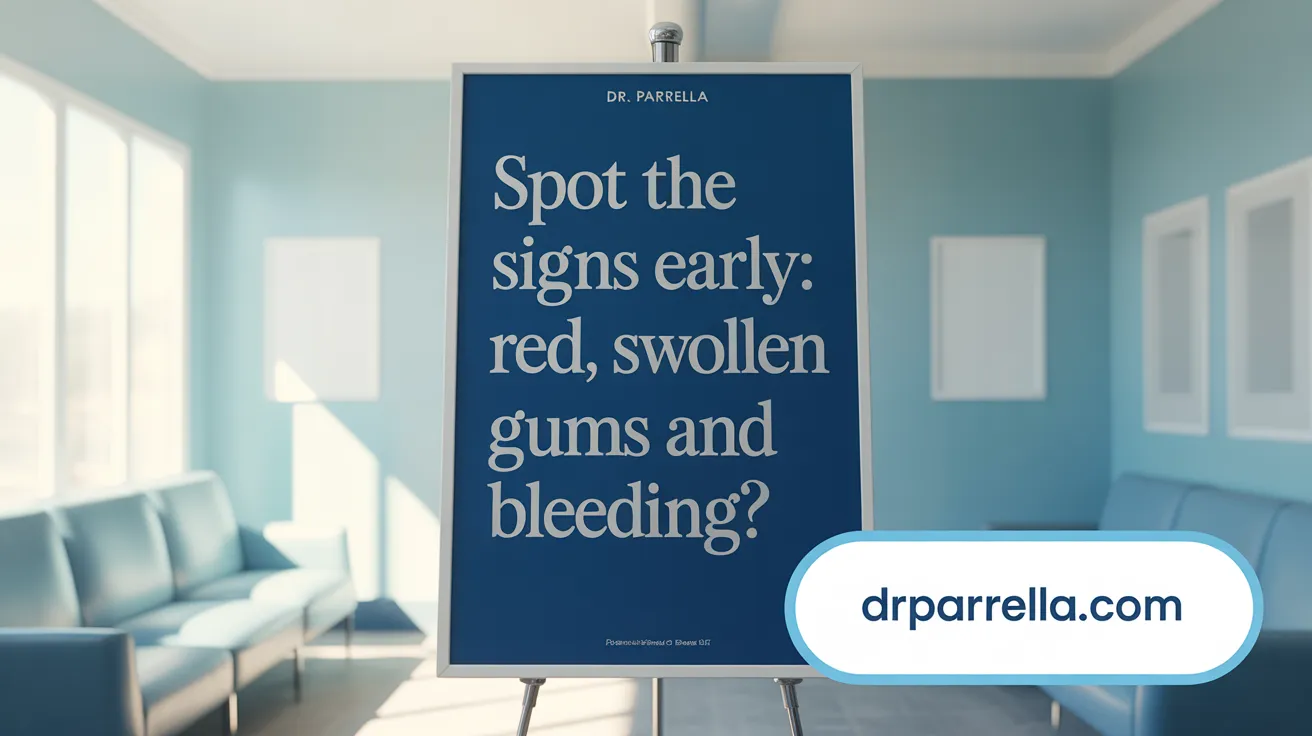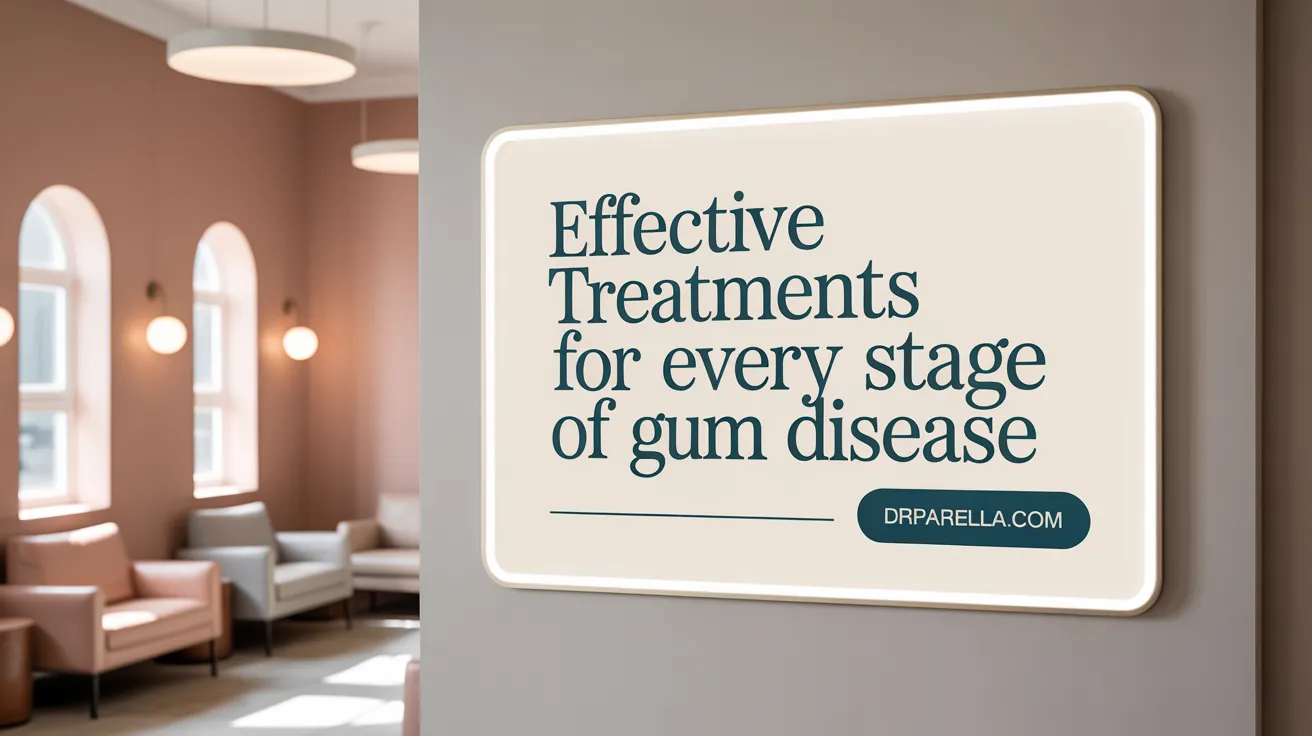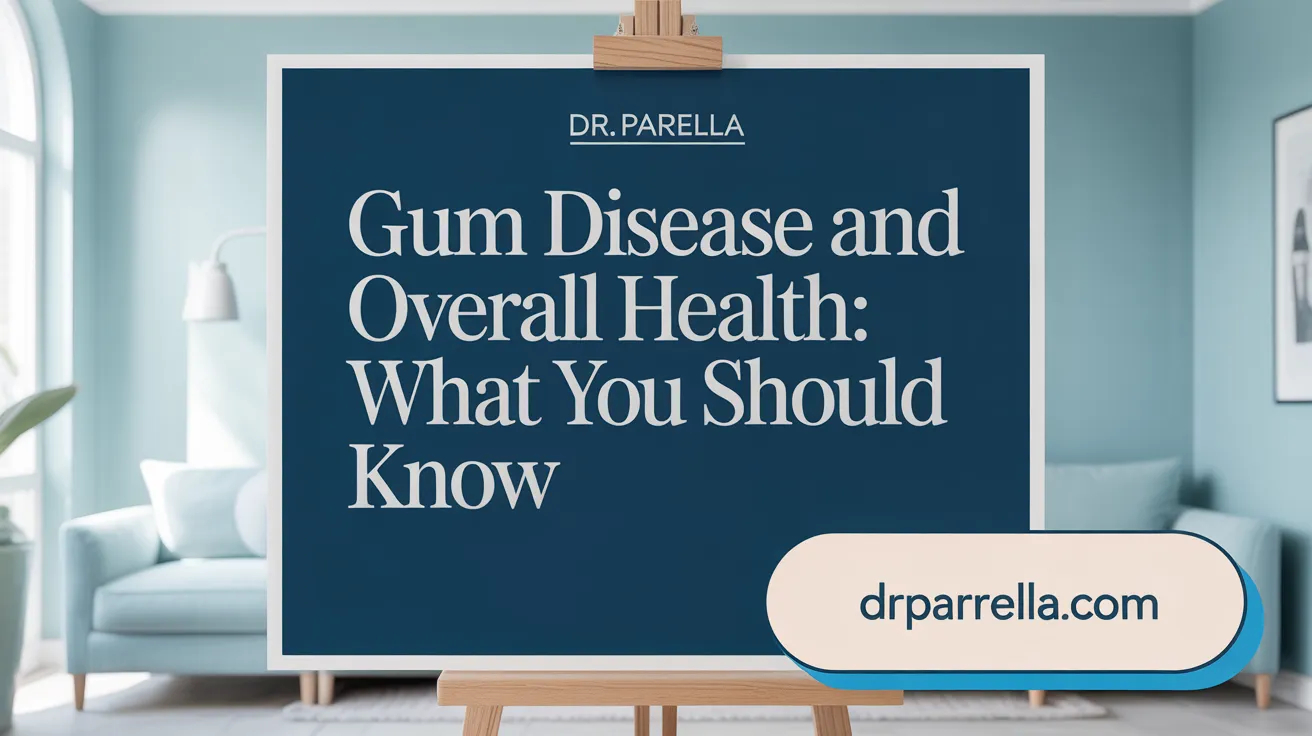Understanding Gum Disease: The Silent Threat to Oral Health
What is Gum Disease?
Gum disease, also known as periodontal disease, is an infection and inflammation of the gums and surrounding tissues that support your teeth. It begins with plaque buildup—a sticky film of bacteria—and can progress from mild irritation to severe damage.
How Common Is Gum Disease?
Nearly half of all adults in the United States have some form of gum disease, making it the leading cause of tooth loss nationally. It affects people of all ages but becomes more prevalent with age, impacting up to 60% of adults over 65.
Stages of Gum Disease
Gum disease typically progresses through four stages:
- Gingivitis: The earliest stage, characterized by red, swollen, and bleeding gums. This stage is reversible with proper oral care.
- Mild Periodontitis: Infection begins to spread below the gumline, causing gum recession and early bone loss.
- Moderate Periodontitis: Deeper pockets and increased bone loss occur, with symptoms like loose teeth and bleeding.
- Advanced Periodontitis: Extensive damage to gums and bone can lead to tooth loss.
Why Early Recognition Matters
Gum disease often starts painlessly, which can delay detection. Early signs, such as bleeding gums during brushing, swollen or red gums, and bad breath, should prompt dental consultation. Early detection and treatment can halt disease progression and protect your smile and overall health.
Maintaining good oral hygiene and scheduling regular dental checkups are essential to spotting and managing gum disease early, especially for families in local communities like Somerville, MA.
Recognizing the Early Signs of Gum Disease

What are the earliest signs of gum disease?
Early signs of gum disease, commonly gingivitis, include gums that appear red, swollen, and tender. You might notice bleeding during brushing or flossing, and the gums can look puffy or have a reddish hue instead of their healthy pink, firm appearance. These symptoms often cause no pain, which means many people may not be aware they have gum disease without regular dental checkups.
How do healthy gums differ from those with gingivitis?
Healthy gums are typically firm, snugly fitting around the teeth, and range in color from light to dark pink depending on skin tone. In contrast, gums affected by gingivitis are inflamed, red or purple, and may bleed easily. They might also feel sore or tender when touched. Learn more about the symptoms of gum disease.
Why are regular dental checkups important?
Since early gum disease can be painless, it's crucial to schedule consistent dental visits. Dentists can detect subtle gum changes and plaque buildup before the disease progresses. Early detection allows for prompt treatment, such as improving home oral care and professional cleanings, which can reverse gingivitis and prevent periodontitis.
Maintaining good oral hygiene with twice-daily brushing and daily flossing, along with regular dental exams, plays a critical role in keeping gums healthy and catching any problems early.
Understanding the Progression of Gum Disease and Risk Factors

How does gum disease progress if left untreated?
Gum disease starts when dental plaque and gum disease, a sticky film of bacteria, builds up on the teeth and irritates the gums. This initial stage is called gingivitis and its reversibility and is marked by red, swollen, and bleeding gums. Fortunately, gingivitis is reversible with proper oral care like brushing, flossing, and professional dental cleaning.
If not treated, the infection advances into periodontitis symptoms. In this stage, bacteria spread below the gum line causing inflammation, gum recession, and destruction of the bone and tissues that support the teeth. This can result in loose teeth and eventually tooth loss if still untreated. The disease progresses through mild, moderate, and advanced periodontitis, with increasing severity and damage at each stage. For more on stages of gum disease, see the detailed breakdown.
What factors increase the risk of developing gum disease?
Several factors can elevate the risk of gum disease by promoting plaque buildup or impairing the body's ability to fight infection. Smoking and gum disease significantly increase risk and reduce treatment success.
Other contributors include poor oral hygiene habits, allowing plaque and tartar to accumulate, and systemic conditions like diabetes and gum disease, which affect healing and immunity. Hormonal changes, such as those during pregnancy or menopause, can also make gums more susceptible. Additional risk factors involve stress and periodontal disease, certain medications that reduce saliva flow, genetic predisposition, and diseases like heart disease and gum health that are linked to gum inflammation.
How does bacterial plaque lead to infection and tissue damage?
Plaque contains harmful bacteria that infect the gum tissue, triggering inflammation. If plaque is not removed daily, it hardens into tartar, which further harbors bacteria and irritates gums. Understanding the role of plaque and tartar in gum disease is critical.
The bacteria cause the gums to pull away from teeth, forming pockets that trap more bacteria and debris. This intensifies infection, destroys connective tissue, and erodes the jawbone. The ongoing damage compromises tooth stability and leads to the clinical signs and symptoms of advanced gum disease. Maintaining good oral hygiene and prevention of gum disease and regular dental visits are critical to interrupt this harmful cycle early and protect your smile and overall health.
Preventive Measures to Protect Your Gum Health

How can gum disease be prevented?
Preventing gum disease starts with consistent and effective oral hygiene. Brushing your teeth at least twice a day using fluoride toothpaste helps to remove plaque—the sticky bacteria film responsible for gum inflammation. Flossing daily is essential to clean between teeth and beneath the gumline where toothbrushes cannot reach. Additionally, using an antibacterial mouthwash can reduce harmful bacteria and support healthier gums.
Avoiding tobacco products is one of the most important steps to protect your gums. Smoking increases the risk of gum disease and slows healing. A balanced diet rich in vitamins, especially Vitamin C, promotes strong, healthy gums. Eating fruits and vegetables like oranges, kale, and broccoli supports immune health and tissue repair.
Regular dental visits for professional cleanings and checkups are vital. Dental professionals can remove hardened tartar buildup that cannot be cleaned at home and detect early signs of gum disease. Early treatment improves outcomes and can prevent progression to more serious gum conditions.
By combining excellent daily oral care, healthy lifestyle choices, and routine dental care, you can effectively protect your gum health and reduce the risk of gum disease.
Treatment Options for Early and Advanced Gum Disease

What treatments are available for gum disease at different stages?
Gum disease treatment varies depending on its severity. Early gum disease, known as gingivitis, is reversible. At this stage, improving oral hygiene with regular brushing and flossing alongside professional dental cleanings can restore gum health.
For early periodontitis, where bacteria have spread below the gum line, non-surgical treatments such as scaling and root planing are recommended. These deep cleaning procedures remove plaque and tartar from teeth surfaces and beneath gums to halt disease progression.
In more advanced stages of periodontitis, surgical interventions may be necessary. These include flap surgery, bone grafting to replace lost bone, gum grafting for receding gums, and guided tissue regeneration to encourage growth of healthy tissue.
Additionally, antibiotics and antiseptic mouth rinses can help control bacterial infection during treatment, supporting tissue healing and reducing inflammation.
Effective management of gum disease requires a combination of these approaches tailored to disease stage, together with ongoing good oral hygiene and regular dental visits to maintain periodontal health.
The Broader Health Implications of Gum Disease

Does gum disease affect overall health?
Yes, gum disease is more than just an oral health issue; it has significant connections to overall health. Research has shown that periodontal disease is linked to several systemic conditions including heart disease, stroke, diabetes, respiratory problems, and even complications during pregnancy.
The bacteria that cause gum infections can enter the bloodstream through inflamed gums. Once in circulation, they may contribute to or worsen chronic health problems by promoting inflammation or affecting blood vessels. This is why controlling gum disease is important—not only to protect your teeth but also to support your general health (Impact on Overall Health).
Additionally, gum bacteria can be transmitted through saliva, such as during kissing. This contagious aspect emphasizes the importance of good oral hygiene and regular dental checkups to reduce the risk of spreading harmful bacteria (Transmission of Periodontal Bacteria.
Maintaining healthy gums plays a vital role in preventing these broader health issues. Preventive care, early treatment of gum disease, and lifestyle changes such as quitting smoking can greatly improve both oral and systemic well-being. Regular visits to your dentist can help detect gum disease early and manage it effectively, thereby protecting your overall health (Early Detection and Treatment.
Community and Personalized Care: The Role of Your Dentist in Somerville, MA
Why Are Regular Dental Visits Important for Early Detection?
Early gum disease, or gingivitis, often shows subtle or no symptoms, making regular dental check-ups vital. At Dr. Anthony P. Parrella's clinic in Somerville, MA, routine examinations help spot early signs of gum disease like swollen, red gums or bleeding before they advance to more severe periodontitis symptoms. This proactive approach allows timely intervention that can reverse gingivitis and prevent tooth loss.
How Does Personalized Dental Care Support Early Gum Disease Management?
Personalized care means treatments and advice tailored to each patient’s specific condition and risk factors. Dr. Parrella's clinic provides customized plans based on a thorough assessment, including oral hygiene habits, medical history, and lifestyle factors such as smoking or diabetes. This individualized strategy optimizes managing periodontal disease and promotes long-term oral health.
What Is the Community Focus on Oral Health Education and Prevention?
Beyond one-on-one care, the clinic emphasizes educating Somerville residents about daily preventive practices like brushing twice daily, flossing, and avoiding tobacco, which are essential in fighting gum disease causes and prevention. Community outreach programs enhance awareness and encourage regular dental check-ups, making oral health a shared priority. This collective effort supports healthier smiles and reduces complications related to periodontal disease causes, symptoms, and risk factors.
Protect Your Smile: The Importance of Early Recognition and Management of Gum Disease
Understanding and Preventing Gum Disease
Gum disease, starting as gingivitis, affects nearly half of adults and can lead to severe issues like tooth loss if untreated. Early signs include red, swollen, or bleeding gums, bad breath, and gum tenderness. Maintaining good oral hygiene is essential — brush twice daily, floss regularly, and use antibacterial mouthwash to control plaque buildup, the primary cause of gum disease.
Effective Treatment and Care
If detected early, gum disease is reversible with professional cleanings and improved hygiene. More advanced stages may require deep cleaning or surgical treatments. Avoiding tobacco and managing health conditions like diabetes improve outcomes.
Stay Proactive for a Healthy Smile
Regular dental checkups are crucial for early detection and management of gum disease. Proactive care helps prevent progression and protects your overall health. Schedule routine visits to your local dentist to keep your gums and teeth healthy for years to come.
